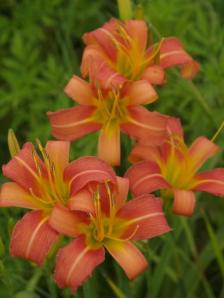Everyone always seems to chuckle whenever I suggest that they converse with their plants. The reality is I am absolutely serious!
Let’s go back to square one. When plants first appeared on our planet, they literally grew where they were planted. They were in the right place which supplied their every need. They flourished because all the stars were aligned to provide for their every wish.

At some point, a person came along who thought it would be nice if that root plant grew closer to where s/he lived, so they tried moving it. It grew, if perhaps not quite as well, so this person attempted to replicate its former environment creating the very first GARDENER! We are still doing that today. Our farmers are brilliant at that (MOST of the time). And of course, we gardeners try very hard to make our plants happy outside. We understand that there are limits. Some plants just will not flourish or even grow in some climates. But, it doesn’t stop us from bringing those plants INSIDE!

The thought is that we can provide for ALL their needs inside our homes. We can set them on a windowsill, or under a grow light and all should be well in paradise. Right? Well, maybe not…

.
The minute we pick up that pot and bring it inside our homes, we are becoming “The ALL Powerful” (Or whatever you choose to call it.) That means that you are assuming SOLE responsibility for that little piece of nature. It is now TOTALLY out of it’s element, and it’s up to YOU to provide for its every need.

But, what IS that need? Here is where you have to start listening and consequently talking to your plant. The talking starts by finding out what that little (or big) guy needs in the way of nutrients, water, and surroundings (pot and light). The listening begins when you see how that plant responds to your efforts. If it doesn’t look healthy, if it droops or drops leaves, or the leaves turn yellow, or the roots rot, obviously, you’re doing something wrong. It’s TALKING to you! You just have to begin to understand its language.
My next entries in this blog will go into further depth about talking and listening to your plant(s). If you’re interested in following along, go to the tab at the top of this page on the right-hand side. Give your email address, click “Follow” and you’ll be notified by email when the next upgrade of this blog happens. Thanks for joining!


















 H
H